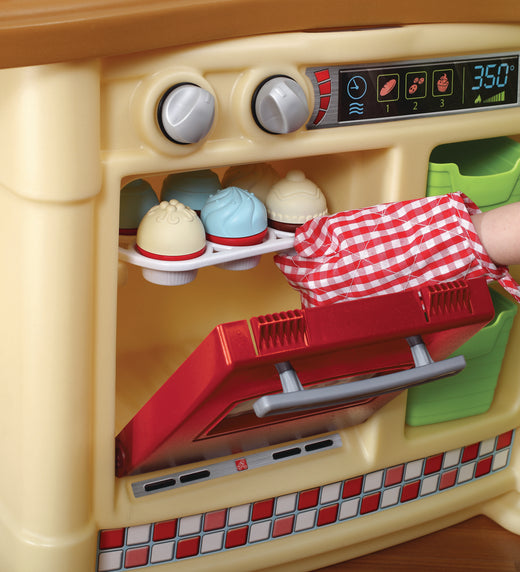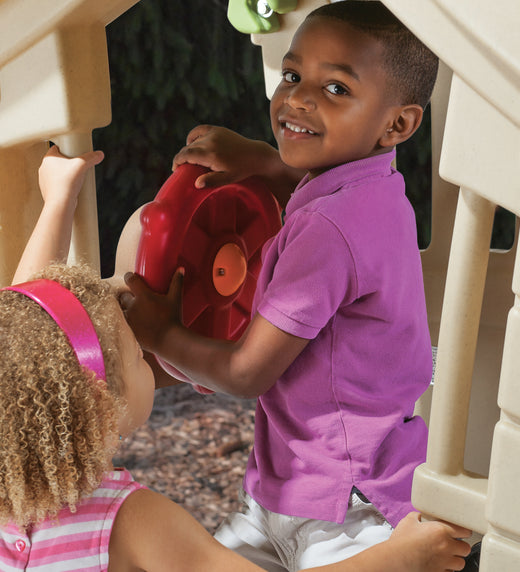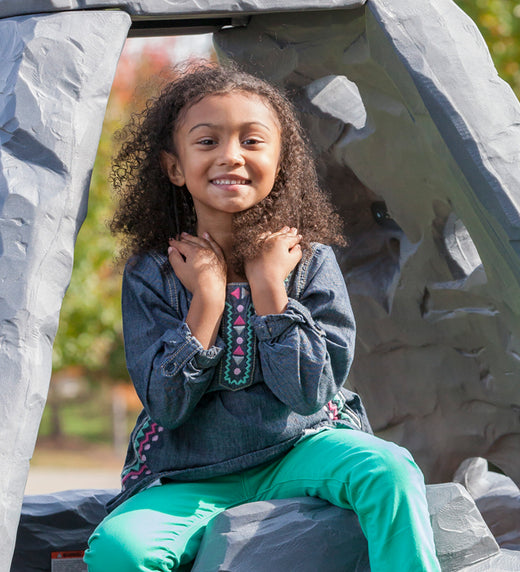
As Easter quickly approaches, now’s the time to officially kick-off Spring with the ultimate backyard egg hunt! Outdoor play is just around the corner, and an Easter egg hunt is a great way to get little ones outside to run, play, and socialize. Wondering how to do an Easter egg hunt for toddlers? These top tips can apply to any outdoor play area, because after all, the Easter bunny loves getting creative!
Creative Hiding Spots
Take a look at their outdoor play space in a new way – their playhouse sink, wagon seat storage space, and more make great spots to hide Easter eggs. Below are a few potential Easter egg hiding spots, hiding in plain sight!
- Hide eggs in a playhouse sink or planter box
- Bury eggs in a sandbox
- In the trunk, under the hood or seats in a wagon or ride-on toy
- Floating in a water table
- At the bottom of a water table (if the egg is filled with tons of candy or a heavier item)
- Under the lid of a pretend play grill
Egg Haulers for Easy Transport
We love our Springtime Wheelbarrow™ and Little Helper’s Shopping Cart™ because they’re great for little ones to push around and fill up with Easter egg finds! At the starting line, give each child a “freebie” egg in their haulers to get them excited for what’s to come.
Divide into Groups
To keep the outdoor Easter egg hunt fair and fun, consider dividing the participants into groups by age. This ensures that the older kids don’t get all of the eggs, and everyone can have a fair chance at the hunt. Age groups also work for multiple rounds, so the Easter egg hunt can last longer and get a boost with teaching (and enforcing) patience and sharing.
Make it a Color Exercise
Give each child a card with four to five different colored dots. The mission is to collect only the eggs in the colors that match the dots on their card. Color groups ensure that each child gets the same number of eggs, and the Easter egg hunt will last a little longer. The color format also allows multiple rounds of egg hunt fun!
A Lesson in Teamwork
Find up to three age-appropriate jigsaw puzzles and label the pieces of each puzzle with 1, 2, or 3. Then, mix the pieces of all the puzzles together and randomly put them into the Easter eggs. Children will get multiple layers of fun! They’ll find the eggs, sort the pieces, and then put the puzzles together with the corresponding numbers. As a team, little ones will help each other sort the pieces into each group based on the numbers on the backs of each puzzle piece, turning the “done in a flash” Easter egg hunt into a fun activity that can last for hours – with a lesson in teamwork, problem solving, and social skills.
Bonus Prize Tickets
Mark a few eggs with stickers, drawn-on stripes or symbols, or designate with a separate color than the rest. When a child finds their special egg, they can redeem it for a prize. Some great prize ideas can include supplemental items to something received in their Easter basket, like a pack of play food for a shopping cart toy, or a pack of play balls for a water table. Other prizes include a bell for a new bicycle, accessories for dolls or figurines, and so much more!
Easter Egg Hunt Mystery Clues
In the days leading up to the big Easter egg hunt, place eggs in fun places. Imagine their excitement when little ones go to brush their teeth on Wednesday night and find an egg next to the toothpaste! Incorporate fun messages like “Egg hunt on Sunday, 9am. See you then! – The Easter Bunny” and “Hippity, hoppity… Easter is near! See what’s in store on Sunday at 9am.” Hide the eggs in shoes, cereal bowls, sock drawers; the sky is the limit. When they start finding the eggs days before Easter, their excitement will grow!


